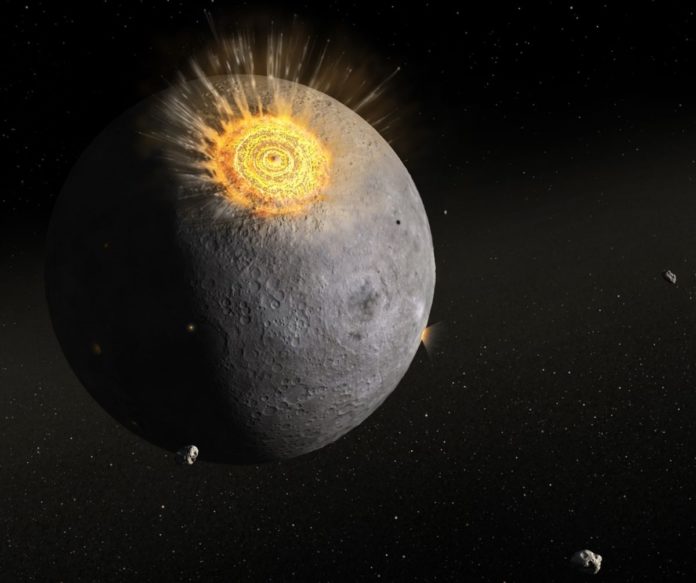Precisely compelling, the formation and evolution of the lunar magnesian suite is key to understanding the earliest periods of magmatic crustal structure that followed accumulation and primordial differentiation of the Moon. However, the origin and evolution of these unique rocks are highly debated.
A new study by the Royal Ontario Museum has discovered the cause of the formation of the Moon’s surface. According to the study, the formation of ancient rocks on the Moon may be directly linked to large-scale meteorite impacts.
Scientists reached this conclusion by studying a unique rock collected by NASA astronauts during the 1972 Apollo 17 mission to the Moon. They found that the rock is composed of minerals that formed at extremely high temperatures (over 2300 °C/ 4300 °F) that can only be achieved by the melting of the outer layer of a planet in a significant impact event.
Scientists discovered the presence of Cubic zirconia, the cubic crystalline form of zirconium dioxide (ZrO2).
Often regarded as an inexpensive diamond alternative, the cubic zirconia would only form in rocks heated to above 2300 °C. Though it has since reverted to a more stable phase (the mineral known as baddeleyite), the crystal retains distinctive evidence of a high-temperature structure.
While taking a gander at the structure of the crystal, the specialists likewise estimated the age of the grain, which uncovers the baddeleyite shaped over 4.3 billion years ago. It was inferred that the high-temperature cubic zirconia phase might have formed before this time, proposing that huge effects were fundamentally essential to forming new rocks on the early Moon.
This new research suggests that significant impacts over 4 billion years ago could have driven this mixing, producing the complex range of rocks seen on the surface of the Moon today.
Dr. Lee White, Hatch Postdoctoral Fellow at the ROM, said, “Rocks on Earth are constantly being recycled, but the Moon doesn’t exhibit plate tectonics or volcanism, allowing older rocks to be preserved. By studying the Moon, we can better understand the earliest history of our planet. If large, super-heated impacts were creating rocks on the Moon, the same process was probably happening here on Earth.”
Dr. Ana Cernok, Hatch Postdoctoral Fellow at the ROM and co-author of the study, said, “By first looking at this rock, I was amazed by how differently the minerals look compared to other Apollo 17 samples. Although smaller than a millimeter, the baddeleyite grain that caught our attention was the largest one I have ever seen in Apollo samples. This small grain is still holding the evidence for the formation of an impact basin that was hundreds of kilometers in diameter. This is significant because we do not see any evidence of these old impacts on Earth.”
Dr. James Darling, a reader at the University of Portsmouth and co-author of the study, says the findings change entirely scientists’ understanding of the samples collected during the Apollo missions, and, in effect, the geology of the Moon. “These unimaginably violent meteorite impacts helped to build the lunar crust, not only destroy it.”
Journal Reference:
- L. F. White et al., Evidence of extensive lunar crust formation in impact melt sheets 4,330 Myr ago. DOI: 10.1038/s41550-020-1092-5
